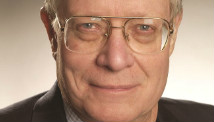Another soccer coach linked to hazing allegations on athletic teams at Maine West High School has been suspended without pay by the district while officials pursue his dismissal.
Maine Township High School District 207 officials reached that decision on freshman boys soccer coach Emilio Rodriguez at a special board meeting Thursday night, a month after reaching the same decision on the employment of head varsity soccer coach Michael Divincenzo.
“The board believes Mr. Rodriguez violated District 207 Board of Education policy and professional expectations by failing to adequately prevent, recognize, report and punish student hazing,” board president Sean Sullivan said in a statement read at the meeting.
Both men were originally placed on paid leave and reassigned from teaching duties this fall when allegations of hazing surfaced in early October on the Des Plaines school’s soccer and baseball teams.
Those allegations are the subject of a lawsuit filed on behalf of four alleged hazing victims on the soccer team and against the district, both coaches and Maine West Principal Audrey Haugan.
Rodriguez, a tenured applied arts and technology teacher, has 17 days to request a hearing on his dismissal through the Illinois State Board of Education, officials said.
Through an attorney, Divincenzo recently requested an appeal hearing with the state board. The appeal process could take up to one year, officials said.
Rodriguez could not be reached for comment on Thursday night. But Des Plaines police reports show he and Divincenzo previously denied any knowledge of team hazing or initiation rituals.
District officials also fulfilled early promises made shortly after the hazing allegations surfaced by approving the hiring of former assistant U.S. attorney Sergio Acosta to lead the district’s independent investigation into hazing allegations, and California-based consultant Community Matters to lead focus groups studying bullying and hazing prevention techniques.
Last week, district officials confirmed the receipt of grand jury subpoenas in the Cook County state’s attorney’s ongoing investigation. Officials reiterated their commitment to “cooperate fully with all agencies conducting their own investigations, including the Cook County State’s Attorney, Des Plaines Police and the Illinois Department of Children and Family Services.
One subpoena, dated Dec. 6 and obtained by the Tribune, directs Maine West Principal Audrey Haugan to produce “personnel files, disciplinary records, reports, memorandums, summaries, interviews, investigations, notes, statements or other such writings or recordings for Michael Divincenzo and Emilio Rodriguez, and any and all other employees associated with coaching student athletes from 2007 to the present time.”
In another Dec. 6 subpoena, Superintendent Ken Wallace is directed to produce “any written materials describing or explaining” school, student athlete, coach or teacher conduct codes or rules, “or rules or any other similar such writings including but not limited to the topics of hazing, sexual misconduct or physical misconduct in any manner associated with Maine West High School.”
Wallace, Haugan, Maine East Principal Michael Pressler and Maine South Principal Shawn Messmer also received subpoenas dated Dec. 7. Those subpoenas, which were partially redacted, seek “any and all letters, emails, reports, memorandums, call logs, writings, recordings, or other such material regarding” redacted information, “including any such documents from within the school records or school file for” redacted information.
jbullington@tribune.com

